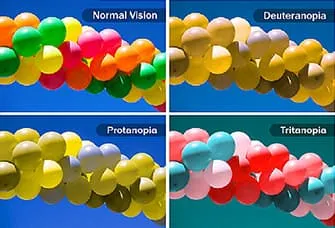
Cones control your color vision. There are several kinds of pigments present in three types of cone cells. Some react to short-wavelength light, others react to medium wavelengths, and others react to higher wavelengths
Rods only have one kind of pigment. It reacts the same way to any light wavelength. Rods don’t have anything to do with color vision. But they are very sensitive to light and allow us to see at night.
When the cones have all the various pigments -- called photopigments -- your eye sees all possible colors. If there’s a problem with the pigments, you won’t see colors the way you should. This is called color deficiency or color blindness.
If just one pigment is missing, you might only have trouble with seeing certain colors.
If you don’t have any pigments in your cones, you won’t see color at all. This is known as achromatopsia, and it is rare.
What Causes Color Blindness?Usually, genes inherited from your parents cause faulty photopigments -- molecules that detect color in the cone-shaped cells, or “cones,” in your retina.
But sometimes color blindness is not because of your genes, but rather because of:
What Are The Different Types Of Color Blindness?

The most common types happen when genes you inherit from your parents that help make the photopigments in the cones of your eyes don’t work properly. Sometimes this means you are less sensitive to some colors than others, and sometimes it means you can’t see certain colors.
Red-Green Color Blindness
It’s when photopigments in your eyes’ red cones or green cones don’t work properly -- or at all. There are several types:
Blue-Yellow Color Blindness
This is when your blue cone photopigments are either missing or don’t work correctly. It's the second most common type, and it affects males and females equally.
Complete Color Blindness
Also called monochromacy, you don’t see any color at all and your vision may not be as clear.
There are two types:
The kind that’s present at birth doesn't. Most people who are colorblind lead normal and complete lives. The condition might keep you from a job -- like a pilot -- that requires a certain level of color vision.
If you think you have a problem with color vision, talk to your eye doctor right away. They can tell you if you’re seeing colors properly and what to do if you aren't.